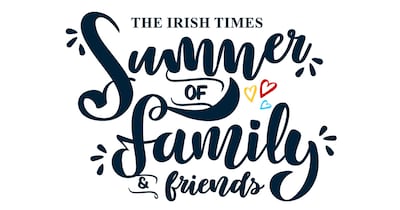
“You can see how beautiful animals are when they are dead. I like whales. They have a beautiful skeleton and most of them have a big history, like this one which has been hanging here for 150 years,” says Mickel van Leeuwen, the Dutch specialist whale dismantler from Inside Out Animals. Van Leeuwen was tasked with dismantling the large fin whale and a smaller humpback whale in the Natural History Museum in advance of major renovation works, which has seen the museum closed to visitors for almost two years.
Van Leeuwen is just one of a group of conservators, curators, scaffolding workers and crane operators who worked away inside the Natural History Museum throughout the Covid-19 pandemic, removing the treasured collections before its roof was repaired.
Their patient work is explored in a new RTÉ documentary, The Dead Zoo, which will air on Monday, August 1st – the day before the museum reopens to the public.
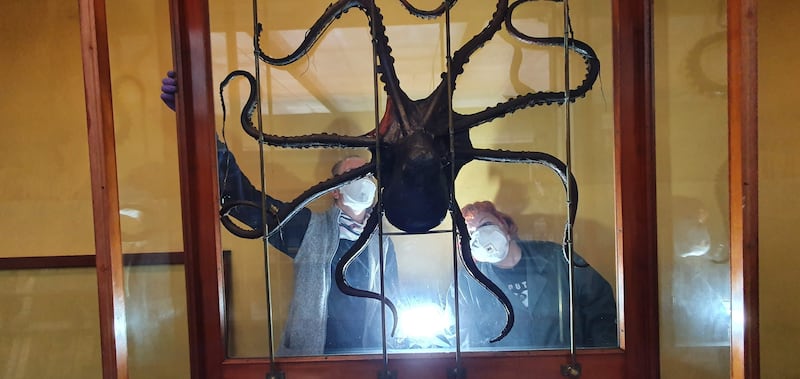

Next door to the entrance to Leinster House on Dublin’s Merrion Square, the Natural History Museum is the oldest museum in Ireland in continued use since it opened in the 1860s. Affectionately known as the Dead Zoo, its closure for renovations in 2020 was lamented by many regular visitors.
READ MORE
“Grandparents bring their grandchildren here and remember coming here with their grandparents, and it hasn’t changed in 100 years. [Before the renovations began], people said to us ‘I hope you don’t ruin the place now’ – meaning that they hope we don’t change it in any way,” explains Nigel Monaghan, the keeper of the Natural History Museum who retired last month.
Returning to the museum to give The Irish Times a tour in advance of the reopening, Monaghan remains as enthusiastic as ever about the listed Victorian building and its historic collections that he has curated for more than 20 years.
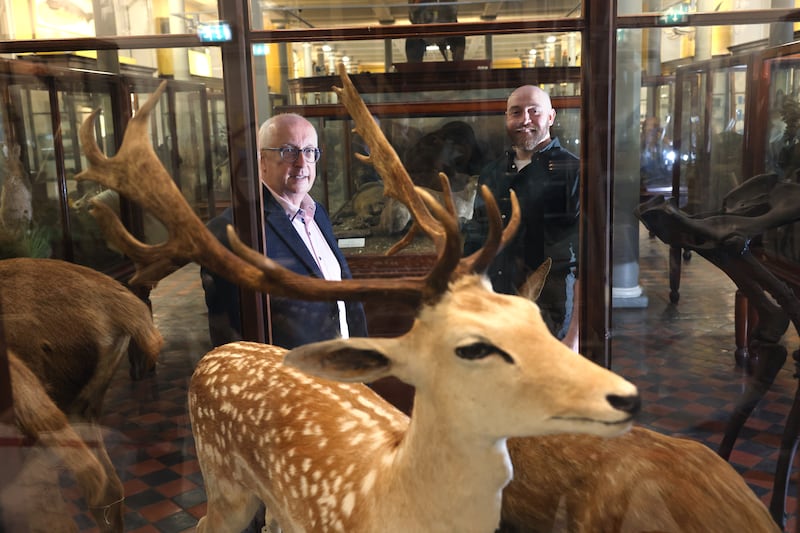
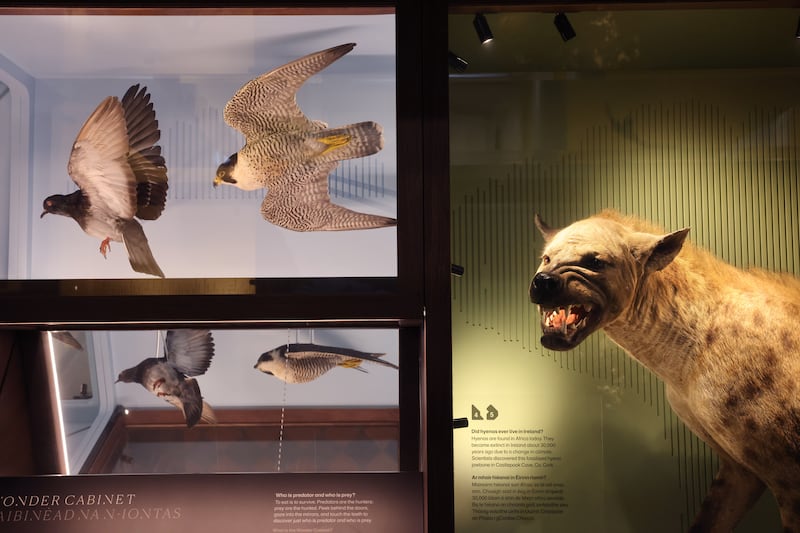
The museum’s deputy curator, Paulo Viscardi, defers to his senior colleague as we chat about children’s favourite pieces, the ongoing renovation works – repairing the leaking roof is the current mammoth task in hand – and the 10,000 or so dead animals, birds, fish and insects displayed in glass mahogany cabinets.
“Children love looking at all the animals they’ve seen on television and in video clips – the rabbits, the badgers, the big birds of prey. They can stand really close to them and get an idea of scale, and it slowly dawns on the younger ones that they are dead,” says Monaghan.
When the museum reopens (admission is free but advance online booking is essential, with no group booking larger than six people), visitors will only be able to look at collections on the ground floor due to ongoing renovations works on upper levels.
The ground floor exhibits include mammals such as hyenas, wolves and woolly mammoths as well as a wide variety birds, fish and insects found in Ireland either now or in the past.
On our scouting visit behind closed doors, I was fascinated to study many of the coastal and countryside birds that are sometimes elusive in real life, from guillemots and sand pipers to buntings, finches and wagtails. The enormous brown trout, conger eel and salmon in the glass cabinets next to the wall make you wonder how these gigantic specimens were ever caught – not to mention preserved and stuffed for posterity to see. And the towering skeleton of the giant deer (also called the Irish elk) – one of the largest deer that ever lived – will wow young visitors.
Narrated by Brendan Gleeson, The Dead Zoo documentary charts the removal of some of the larger animals on the first floor, and the delicate dismantling of the two whale skeletons which had been suspended from the roof since the end of the 19th century.
Many of the exhibits had to be wrapped in plastic and frozen to kill off any unwanted insects that had gathered in the dusty atmosphere over the decades. The elephant and hippopotamus have been covered over; the antelope and giraffe were removed to an off-site storage centre, while smaller exhibits remain in store rooms within the building.
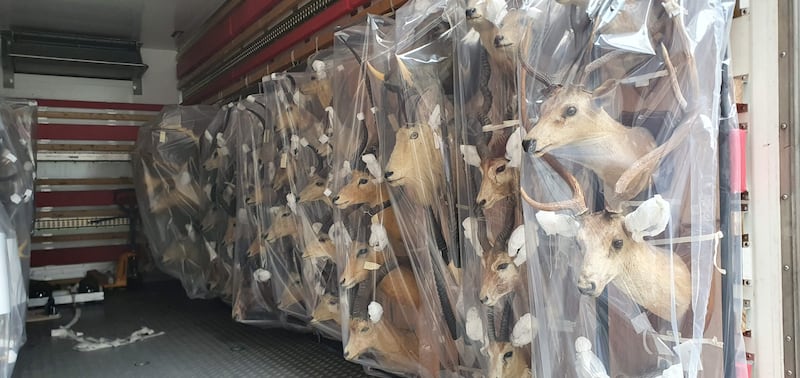
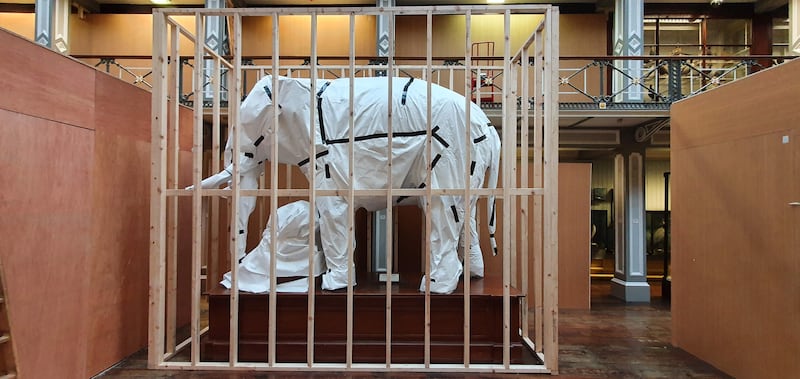
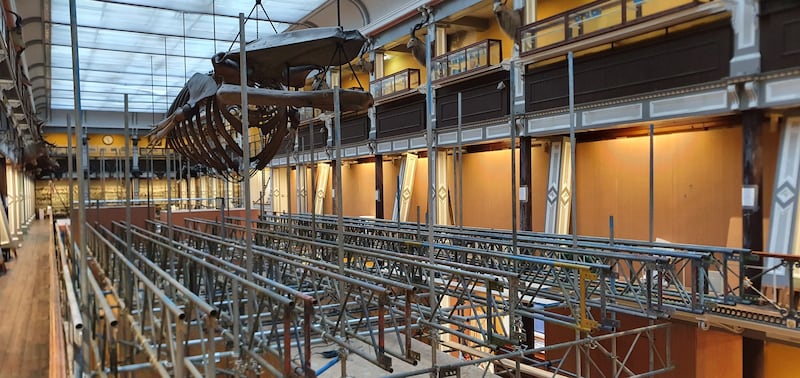
Natural history museums first came into vogue when popular interest in history and science burgeoned during the latter part of the 19th century. It became a sign of culture, worldliness and sophistication to exhibit stuffed animals and birds in the drawingrooms of large homes, and subsequently in museums.
“Natural history museums were an essential part of a functioning society,” explains Monaghan. “There were scientific societies in all cities, and the Royal Dublin Society (RDS) had the capacity to build it – with 50 per cent of State money.”
The Natural History Museum – which is linked to Leinster House by a curving wall – was much larger in the early days. “The Dáil restaurant is where the fossil collection was, which your political correspondent has had fun with in her column,” Monaghan says. “The modern senate was an earlier version of the Natural History Museum, and of course the Dáil chamber itself was the RDS lecture theatre,” Monaghan says.
Early museum pieces came from gentlemen explorers who would send back game heads, skins of exotic animals and birds as trophies from their adventurous exploits. Other exhibits were donated to the museum, or purchased from international taxidermists.
The renowned Scottish explorer, David Livingstone gave the inaugural lecture at the museum in 1857. The State took over the running of it in 1877. Readers interested in delving further into the museum’s past can read Dr Sherra Murphy’s recently published book, The First National Museum: Dublin’s Natural History Museum in the Mid-nineteenth Century (Cork University Press).
The contents of the museum were also widely used by lecturers for teaching purposes, with some exhibits purchased specifically to help students better understand the forms and structures of various creatures. The museum has the largest collection of Blaschka models in Europe; these glass replicas of sea creatures, made by Dresden-based Leopold and Rudolf Blaschka in the 19th century, became the sought after exhibits to display invertebrates (creatures without a backbone) which would have disintegrated in alcohol in specimen jars.
The museum continues to be involved in scientific research, and new specimens come into the museum as they emerge in Ireland. “To understand Irish biodiversity, we need to keep track of it and see what’s here,” explains Viscardi. By way of example, he cites how the museum now has a Least Bittern, a bird which was blown off course and ended up off the Irish coastline. Similarly, a giant Asian hornet, an invasive alien species, was discovered in Ireland in 2021 and a physical specimen is now in the museum’s collection.
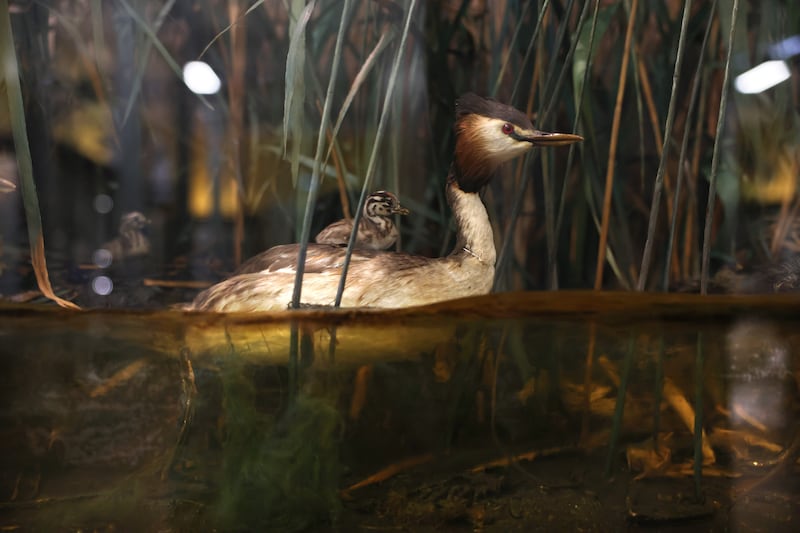
Such additions bring new energy to the museum, but the public remains fascinated by the intricate Blaschka glass models (some of which will be on view when the museum reopens) and historic game heads (stuffed heads of deer or antelope killed on big game hunts). In the 21st century, these historic exhibits tend to prompt wider debates about biodiversity loss, and the pros and cons of rewilding.
“We use them to raise ecological points, and discuss modern biology and rewilding issues,” Monaghan says. “When people talk about introducing wolves to Ireland, I ask, why not hyenas as well? It doesn’t make any sense to introduce an apex predator like a wolf if the whole ecology isn’t there. Where is the rest of the food web? How would it work in a country full of agriculture?” Monaghan argues that rewilding is a frustrating distraction. “Instead, we need to talk to farmers about introducing a rich diversity of landscape without destroying their livelihood,” he suggests.
So, when the doors of this museum reopen to the public at the beginning of August, debates like these will no doubt take place between the freshly cleaned glass cabinets while children eyeball animals they could never dream of coming close to in real life. “It’s been very quiet around here – apart from the builders – so we’ll be excited to have people back and for the children to be wowed by what we have,” says Viscardi.
The museum will close again sometime in 2023 as the difficult conservation work begins on the glass panels in the roof, so avail of this opportunity to reacquaint yourself with these historical exhibits while you can, before further restoration works begin. And in the meantime, you can whet your appetite with the magnificent 3D tours of the building on museum.ie
The Dead Zoo airs on RTÉ One at 6.30pm on Monday, August 1st.






















